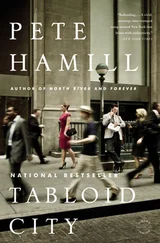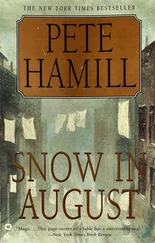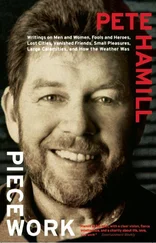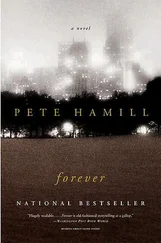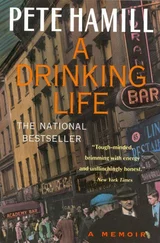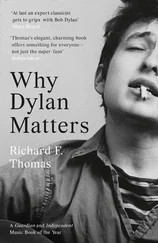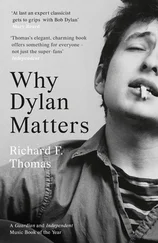Prohibition gave them that common interest. The model for a criminal enterprise could no longer be a local racket, safely lodged within the boundaries of a neighborhood; it had to be organized like any large capitalist corporation, able to cross state lines and national frontiers. That common interest also gave the young Mob guys enormous profits, of course, and bootlegging provided capital for widening their interests into the more traditional underworld enterprises of gambling and prostitution. The overhead was high; it took a lot of money to pay off thousands of cops, Prohibition agents, and prosecutors. But it was better to make payoffs than to go around shooting guns like a bunch of cowboys. Murder had to be an absolutely last resort; wild shooting sprees would only bring down the heat. If the scene was peaceful, you only had to get the law to look the other way, and that was a simple matter of paying off the politicians.
“You know what we all thought growing up?” Sinatra said. “We thought everybody was on the take. We knew the cops were taking. They were right in front of us. But we thought the priests were on the take, the schoolteachers, the guy in the marriage license bureau, everybody. We thought if God came to New Jersey, he’d get on line to get his envelope.”
In New Jersey the most important members of this confederacy were Waxey Gordon (Irving Wexler) and Abner (Longie) Zwillman. Years later there were people in Hoboken who claimed that Gordon was a regular in Marty O’Brien’s. But Sinatra once told me, “The first time I ever saw his face was in a newspaper, when he got out of jail in the 1950s. He was an old man then.” Still, his name was known; he controlled many rackets in Philadelphia and most of the liquor supplies in Hudson and Bergen Counties, and he had even established stills around Hoboken to manufacture beer. “Sometimes the stink was unbelievable,” Sinatra remembered. “The hops, I guess. Whatever it was, it made you gag.”
Zwillman was much more important than Gordon, who always deferred to him. Tall, young (born in 1899), and tough, Zwillman affected an urbane public image. His base was Newark, where he was born and served an apprenticeship as a numbers runner. He helped set up overland routes through New Jersey, assembled a fleet of thirty ships to pick up booze in Canada for delivery along the Jersey Shore, and standardized distribution in the cities. If he needed muscle, he turned to an associate named Willie Moretti, sometimes known as Willie Moore. In the early years of Prohibition, muscle was most often needed to convince the Mustache Petes that their time was over. Some were persuaded to retire. Others were shot in the head. In New Jersey this work was usually left to Moretti and his enforcement squad of about sixty men. By the time Frank Sinatra was ten, the rackets in New Jersey had settled into a routine business. Years after the end of Prohibition, Willie Moretti would play a role in the Sinatra saga too.
III . Against the cynical backdrop of Prohibition, Frank Sinatra was on his own. On the street the most admired men were tough guys. The bootlegger could be seen as a glamorous rebel, one who reaped the rewards of fine clothes, shiny cars, and beautiful women. At the movies the heroes were often cowboys, silent men, handy with guns, who rode in and out of town alone. Each taught the lesson that one solution to perceived injustice was violence. The outlaw, the desperado, the good man who was dealt a bad hand by life: they were central to the emerging American myth, as defined and spread by the new technology of mass culture.
That culture was also forming young Frank Sinatra. In 1927, a few months before Sinatra’s twelfth birthday, the first talkie was released, The Jazz Singer, with Al Jolson. There on the screen, a man opened his mouth and you could hear him sing. The story itself was a Jewish version of the conflicts in Hoboken. Jolson played the young son of immigrants who resists his parents. They want him to sing only in synagogues; he goes out into the world and finds his way to show business, fame, and fortune. Translated into the struggles of Little Italy, it was a triumph of la via nuova over la via vecchia.
At the movies Sinatra began to dream his own American dream. Sometimes he carried those visions to school. Sometimes they were with him after school, when he was in the care of his maternal grandmother, Rosa Garavente. Old-timers from Hoboken would remember him later as a lonely boy, standing in the doorway of his grandmother’s building, watching life go by without him. In a neighborhood of large families, he was often all by himself. Meanwhile, Dolly worked and laughed at the bar of Marty O’Brien’s and combed the tenements for votes. The year 1927 was momentous: Lindbergh flew the Atlantic, Babe Ruth hit 60 home runs, Sacco and Vanzetti were executed in Massachusetts, Stalin took power in the Soviet Union, and Dolly Sinatra got her husband a job with the Hoboken fire department. Later, there were stories claiming that Dolly also had a side business: providing abortions. Like many families, the Sinatra family had its own secrets, and it’s unlikely that they were shared with their son.
“Sometimes I’d be lying awake in the dark and I’d hear them talking,” he remembered years later. “Or rather, I’d hear her talking and him listening. Mostly it was politics or some worthless neighbor. I remember her ranting about how Sacco and Vanzetti were framed. Because they were Italians. Which was probably true. All I’d hear from my father was like a grunt. They never talked about themselves. Except for things like, How could you do a thing like that? That was my mother. He’d just say, Eh. Eh.” Sinatra smiled and said to himself, “Eh.”
It was his mother he remembered most vividly. In his sixties he would remember Dolly nagging him about the dangers of tuberculosis, insisting that he stay away from kids who coughed. He remembered her fears of polio, shared by millions in those days, and her refusal to let him go to beaches or public swimming pools. (He went anyway.) He remembered how she wanted him to go on to a career as an engineer at the Stevens Institute of Technology. And he remembered how she kept a small bat, a kind of billy club, behind the bar at Marty O’Brien’s.
“When I would get out of hand,” he said, “she would give me a rap with that little club; then she’d hug me to her breast.” He paused, and smiled: “I married the same woman every time.”
He was serious. In various ways, in spite of admirable efforts to change himself and leave behind his personal disguises, Sinatra would swing back and forth between father and mother for the rest of his life. Too often he could fall into the patterns of the mute Marty Sinatra, locking himself in cramped cages of solitude. At other times he would become a male version of the garrulous Dolly, waving her vulgarity like a flag of triumph. Across his long life those swings in mood and style would offer him little relief from the template cut in Hoboken. Always he would be driven by the solitary’s longing to be reconciled with the world.
On October 19, 1929, the world abruptly shifted again as the stock market crashed and the end came for what Westbrook Pegler later called the Era of Wonderful Nonsense. At first, nothing affected the neighborhood in Hoboken or the growing prosperity of the Sinatras. Not many people in that neighborhood had plunged hard-earned money into the stock market. Some didn’t even trust banks. For a while life went on. In 1930 the Sinatras moved to a three-bedroom apartment in a large house, and for the first time fourteen-year-old Frank had his own room. Now he had friends too, from the street and from David E. Rue Junior High School, where he was an intelligent but lazy or indifferent student. He seemed desperate to make friends, to be thought of as someone other than a spoiled skinny kid, someone other than Dolly’s, or Marty’s, son. He would play class clown. He showed a talent for drawing. (He would do much painting in the last fifteen years of his life.) He would try to buy friendship with the generous allowance money given to him by Dolly, splurging on candy, ice cream sodas, baseball gloves and bats. Contrary to the public relations myth, he was never a member of an adolescent street gang, but he did get into some fistfights. He rode a bike. He played ball. He discovered girls, developed crushes on a few, was sometimes embraced and more often rejected, with some girls making fun of the scars he’d carried from birth.
Читать дальше

